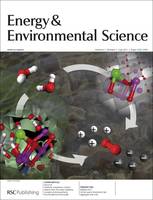Synthetic manganese–calcium oxides mimic the water-oxidizing complex of photosynthesis functionally and structurally
In the latest Volume of Energy & Environmental Science, Holger Dau and coworker present new atomistic models of the structures of the manganese–calcium oxides, which are derived from results of X-ray absorption spectroscopy. The presented results have important implications for both biological water oxidation and the design of catalysts for solar fuel production.
The efficient conversion of solar energy into high-energy chemicals – often referred to as solar fuels – involves major scientific challenges. They need to be addressed because solar fuels are likely to play a central role in a renewable global energy supply.
Any solar fuel will have to be a reduced species (to generate energy when oxidized by atmospheric oxygen) and thus reduction equivalents are necessary for its production. On a global scale, the needed reduction equivalents can be obtained only by the oxidation of water.
Chemically the oxidation of water is an especially intricate reaction, for which efficient and robust catalysts are rare. In the photosynthesis of carbohydrates by plants and cyanobacteria, water oxidation is efficiently catalyzed by a protein-bound Mn4Ca complex. Inspired by the biological catalyst, it was discovered only recently that some readily synthesized manganese–calcium oxides are active water-oxidation catalysts. As manganese and calcium are abundant elements, this promising class of catalysts meets a key criterion for large-scale application.
See also Research\Research Highlights.



